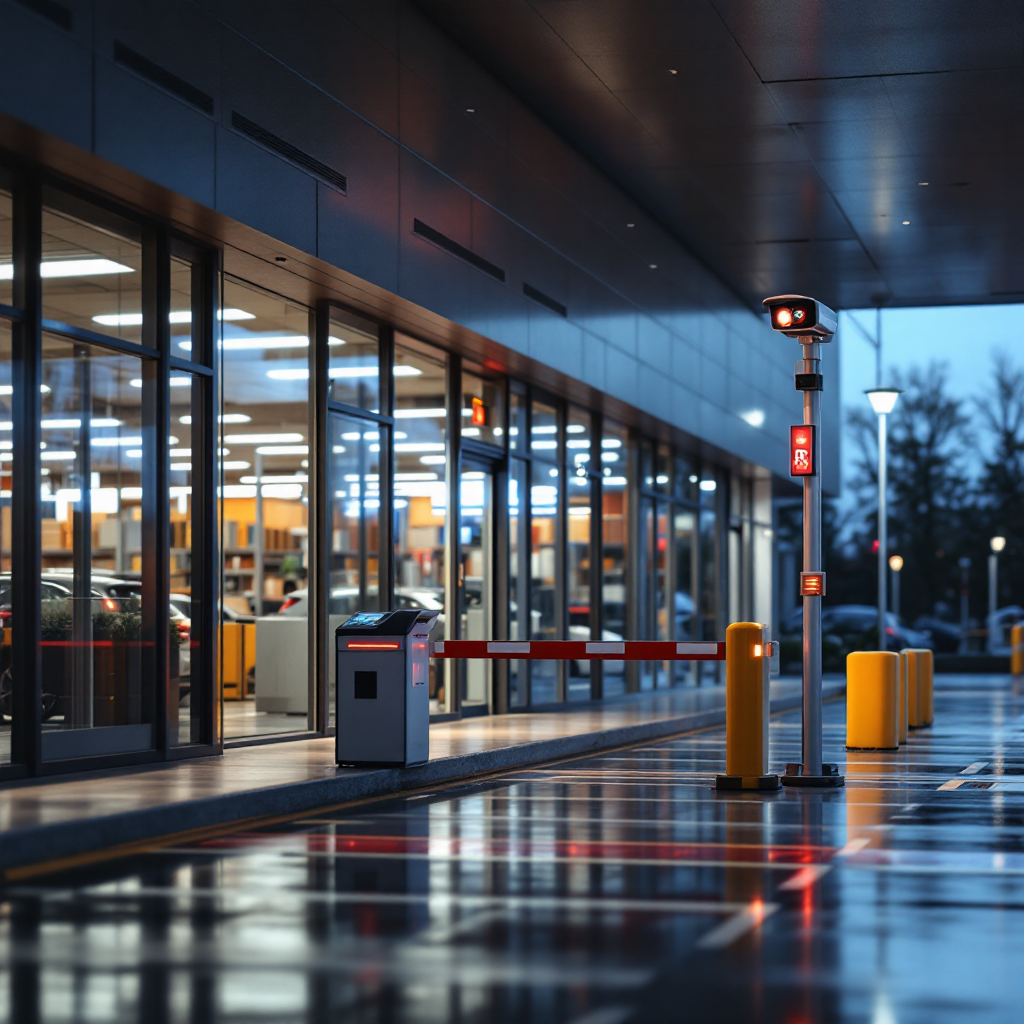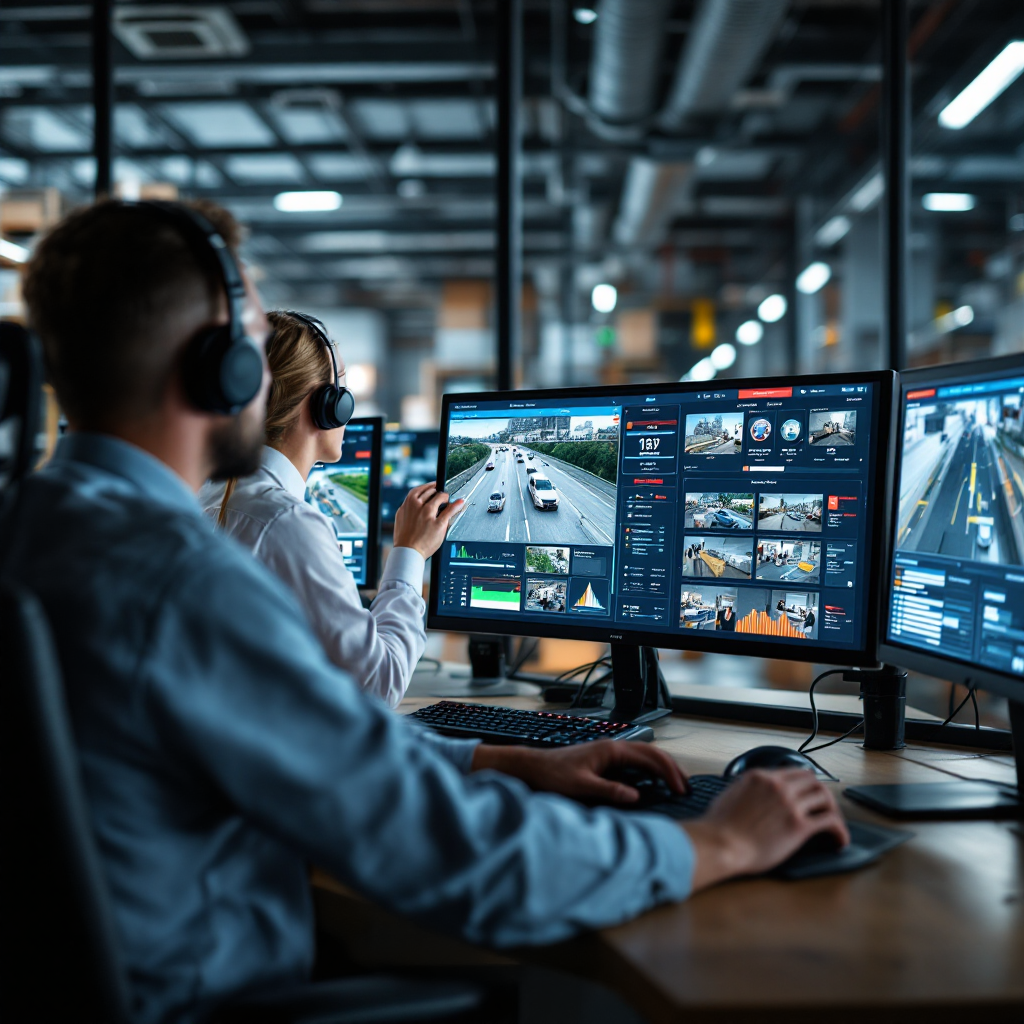camera systems and anpr cameras
Banks rely on robust camera systems to secure parking areas, and ANPR plays a central role. First, high-resolution camera placement matters. Cameras mounted at lanes capture clear frontal and angled views. Next, lighting is assessed so that illumination supports plate reads at night. Then, using an IP camera with the right camera resolution reduces blur and motion artifacts. In addition, bullet or PTZ cameras can be paired with fixed sensors to follow vehicles when needed. Modern lpr and anpr cameras work best where lines of sight are clear. For an overview of automatic number plate recognition at a technical level, see our guide to automatic number plate recognition for banks.
AI and machine learning power OCR, and they convert images into readable plate numbers. In practice, AI models run on on-premise servers or edge devices to keep license plate data inside the bank environment. Therefore, the management system must require integration with local servers for compliance and speed. Also, Visionplatform.ai can convert existing CCTV into an operational sensor network, so banks often reuse their VMS to lower deployment cost and reduce vendor lock-in. This approach helps to maintain data retention policies while keeping models auditable and private.
Compared to traditional CCTV, lpr systems add intelligence and automation. A standard CCTV camera records video for later review. By contrast, an lpr camera captures license plate recognition in real time and streams structured events to an access control system or dashboard. Consequently, banks can track vehicle access, match plate formats to authorised vehicles, and support monitored entry stations and gates. The use of license plate recognition improves situational awareness, while reducing the need for manual checks by security staff. Finally, these systems can be integrated with existing alarm systems and ticketless access workflows to create a seamless experience.
license plate recognition cameras: lpr camera technology
License plate recognition cameras combine optical hardware and dedicated illumination to read license plates day and night. First, a typical lpr camera uses a fast shutter and high frame rate to freeze motion. Second, infrared (IR) illumination highlights contrast between characters and the plate background without dazzling drivers. Third, advanced lens choices control depth of field and minimize distortion so the OCR sees crisp characters. In short, correct illumination and camera resolution drive higher recognition rates. Also, modern lpr technology supports multiple plate formats and can adapt to local plate styles.
High-performance lpr systems achieve high accuracy even under difficult lighting or weather. For example, studies show modern systems can read license plates over 95% in many deployments [source]. Therefore, banks can rely on accurate plate capture for security and operational tasks. In addition, lpr camera firmware often includes pre-processing steps that correct skew, normalize contrast, and crop the plate region before OCR runs. Next, OCR algorithms map characters into plate numbers, and the back-end decodes those strings into plate numbers or plate numbers with region codes.
Integration matters. The lpr camera streams plate reads to a management system and to on-site applications. For OCR details, banks may consult our deep dive on OCR algorithms and CTC. Also, the lpr camera can send events via an API or MQTT so an access control operator sees an entry attempt instantly. Finally, the lpr camera market offers both standalone devices and software-only lpr that runs on a standard cctv camera feed. That choice affects whether you need new hardware or can capture license plate data from your existing infrastructure.

AI vision within minutes?
With our no-code platform you can just focus on your data, we’ll do the rest
access control system at the gate: secure entry and exit
Linking ANPR to a gate creates hands-free, secure entry control. When a vehicle approaches, the lpr camera captures the license plate. Then, the access control system cross-checks plate numbers against an authorised vehicles list. If the plate matches, the barrier lifts for seamless vehicle access. If not, the gate remains closed and a security operator is alerted. This flow reduces queues and supports ticketless workflows for staff and VIPs.
Audit trails are essential. Each plate read is logged with time, lane, and a snapshot of the vehicle. These logs create an audit trail for later review, and they help to flag unauthorized attempts in restricted areas. For banks that want a tighter security posture, the system can integrate with existing VMS and alarm feeds to create correlated incidents. For example, a suspicious plate read can trigger synchronized CCTV camera playback for incident verification. Also, banks can configure retention and access levels to meet privacy requirements and minimize exposure of license plate data.
Real-time monitoring is critical. The system performs instant database checks and uses APIs to consult remote watchlists or locally stored authorised vehicle lists. In addition, it can apply tiered access rules for different vehicle types, such as service vans, staff cars, or visitors. This flexibility helps parking operators and security teams to enforce rules without manual intervention. Finally, the gate control can record plate numbers for billing, permit validation, or forensics during investigations, giving banks both operational control and evidentiary records.
streamline parking operations with parking enforcement solution
Automated plate reads help to streamline parking workflows and to reduce costs. First, ticketless parking becomes practical when a license plate number replaces a paper ticket. For example, entering vehicles have their plate read and linked to an account. Then, when the vehicle leaves, the system calculates a parking fee based on timestamps and applies any permit rules. This reduces gate interactions, and it minimizes gaps in revenue collection.
Parking enforcement solution features include automatic permit validation and real-time alerts for unauthorized parking. In addition, dashboards present occupancy and turnover rates so parking operators can optimize staffing and pricing strategies. Data collected from plate reads also supports data-driven planning. For example, analysis of peak arrival times helps to improve traffic management and to reduce congestion in busy bank parking lots. Furthermore, operators can export plate-based logs for reconciliation and audits.
Analytics add long-term value. Cameras provide occupancy counts and heat maps that show how parking spaces are used over days and months. As a result, banks can plan better for events, allocate reserved bays, and design pricing strategies that reflect demand. Also, this approach supports ticketless parking and reduces the need for physical tickets or permits. Finally, using a management system that streams events to business dashboards turns camera feeds into actionable metrics, so banks gain valuable insights and can minimize operational friction.
AI vision within minutes?
With our no-code platform you can just focus on your data, we’ll do the rest
enhancing security: cameras help identify license plates
Cameras help banks to detect watch-list vehicles and to stop unauthorized access. For instance, real-time monitoring flags stolen vehicles and sends an alert to security personnel. According to industry reporting, banks that use ANPR have seen unauthorized parking reduced by as much as 70% [source]. Therefore, combining plate reads with alerts improves incident response and overall enhancing security in parking facilities.
Video linkage is powerful. When an alert triggers, operators can jump to synchronized CCTV camera clips that show the vehicle and surrounding context. In addition, long-term data retention policies allow investigators to pull months of history to trace movements. Banks must balance retention and privacy, and they should apply strict role-based access to license plate data. For legal context, banks can review research on privacy and ethics in digital policing [source].
ANPR deployments often use anpr cameras plus software that runs on local servers or edge devices. This on-premise model keeps sensitive data inside the bank, and it supports compliance with data protection rules. Also, Visionplatform.ai emphasizes ownership of models and data and offers tools to stream events into BI systems, so alarms become operational signals rather than isolated notifications. Finally, because modern lpr can also support toll gates and traffic monitoring, banks can reuse the same infrastructure for adjacent traffic management tasks.

customer experience improvement using anpr and lpr
ANPR improves the parking experience for customers and staff. First, hands-free entry removes the need for cards or tokens. Then, throughput increases, and lines move faster during peak periods. This direct effect boosts customer experience and reduces frustration for visitors. In addition, staff and VIPs enjoy a seamless arrival process that respects their time.
Scalability supports future growth. Banks can add new lanes or integrate remote monitoring with minimal downtime. In practice, adding more lpr cameras scales the detection footprint while keeping central management intact. Also, API integrations enable account systems to match plate numbers to customer records for loyalty or validation purposes. For more on AI video analytics for banking deployments, see our article about AI video analytics for banking.
Accuracy matters for user trust. Systems that accurately read license plates create fewer false denies and fewer unnecessary interventions. Recognition rates above 95% reduce friction. Also, by offering ticketless parking and automatic billing, banks improve operational efficiency and reduce cashier handling. Finally, well-designed systems deliver peace of mind, better planning, and measurable improvements to the parking experience for customers and for internal teams alike.
FAQ
What is ANPR and how does it differ from LPR?
ANPR, or automatic number plate recognition, is a technology that captures vehicle license data using cameras and OCR. LPR is a common synonym, and both terms refer to the same core process of detecting and converting license plates into digital plate numbers.
Can existing CCTV camera networks be used for ANPR?
Yes, many banks reuse existing CCTV infrastructure to capture license plate recognition data. However, successful capture depends on camera resolution, angle, and illumination, and sometimes dedicated lpr camera hardware gives better results.
How accurate are license plate recognition systems?
Modern lpr systems can achieve high recognition rates, often exceeding 95% under good conditions [source]. Accuracy depends on camera resolution, lighting, plate formats, and environmental factors.
Are there privacy concerns with capturing license plates?
Yes. License plate data can reveal movement patterns, so banks must apply strict data retention and access controls. Research on legal and ethical issues in digital policing explains the risks and mitigation strategies [source].
How does ANPR reduce operational costs?
ANPR eliminates recurring costs tied to physical tags and manual enforcement. One analysis notes ANPR is often a one-time investment that reduces ongoing tag management expenses [source].
What happens when an unauthorized vehicle attempts to enter?
The system flags the plate and can prevent the gate from opening, while sending an alert to security staff. Recorded footage and logs support follow-up and investigations.
Can ANPR integrate with parking payment and permit systems?
Yes. ANPR can automate permit validation, calculate parking fees, and support ticketless parking workflows. Integration via API allows billing systems to use plate reads for reconciliation.
Do banks need special servers to run LPR?
Not always. Some solutions run in the cloud, while others run on-premise or on edge devices. Many banks prefer on-premise deployments to keep license plate data inside their environment and to meet compliance needs.
How can ANPR improve security beyond preventing unauthorized parking?
ANPR provides searchable logs and synchronized video playback, which helps investigators trace vehicle movements. Also, watch-list matching enables immediate intervention for suspect vehicles.
Where can I learn more about implementing ANPR in banking?
Explore resources on AI video analytics for banking to understand integration and operational benefits. For technical details on ANPR model strategies and OCR, see our deep dives on OCR algorithms and on AI video analytics in banking AI video technology in banking.

